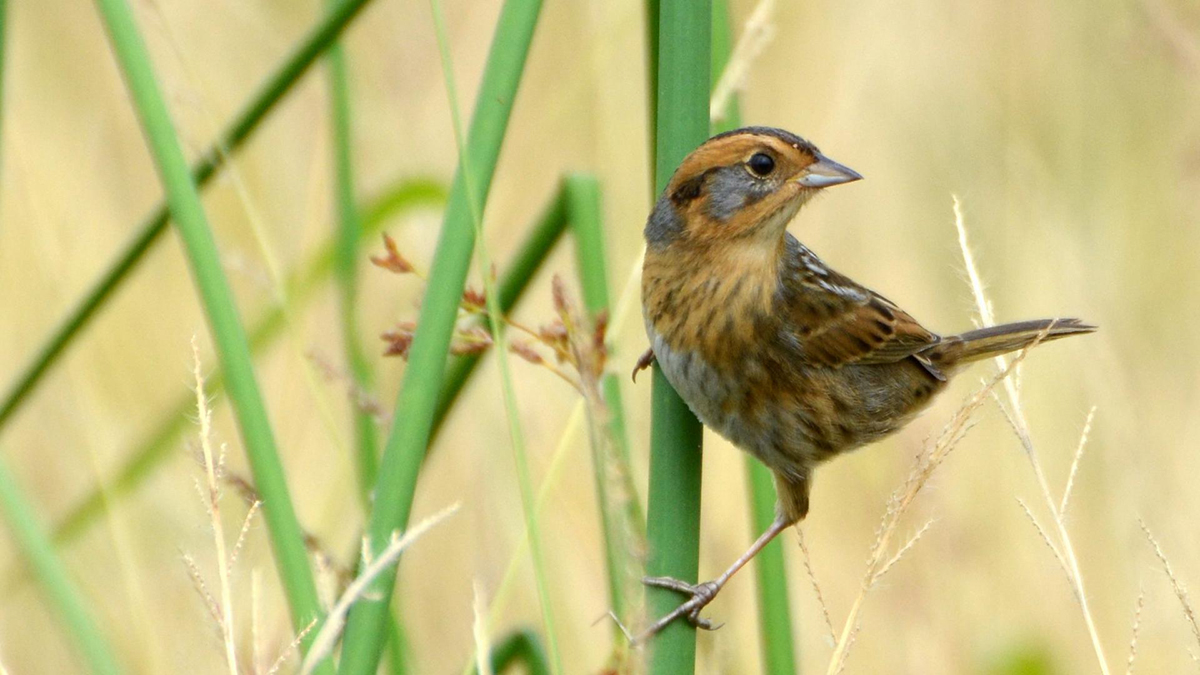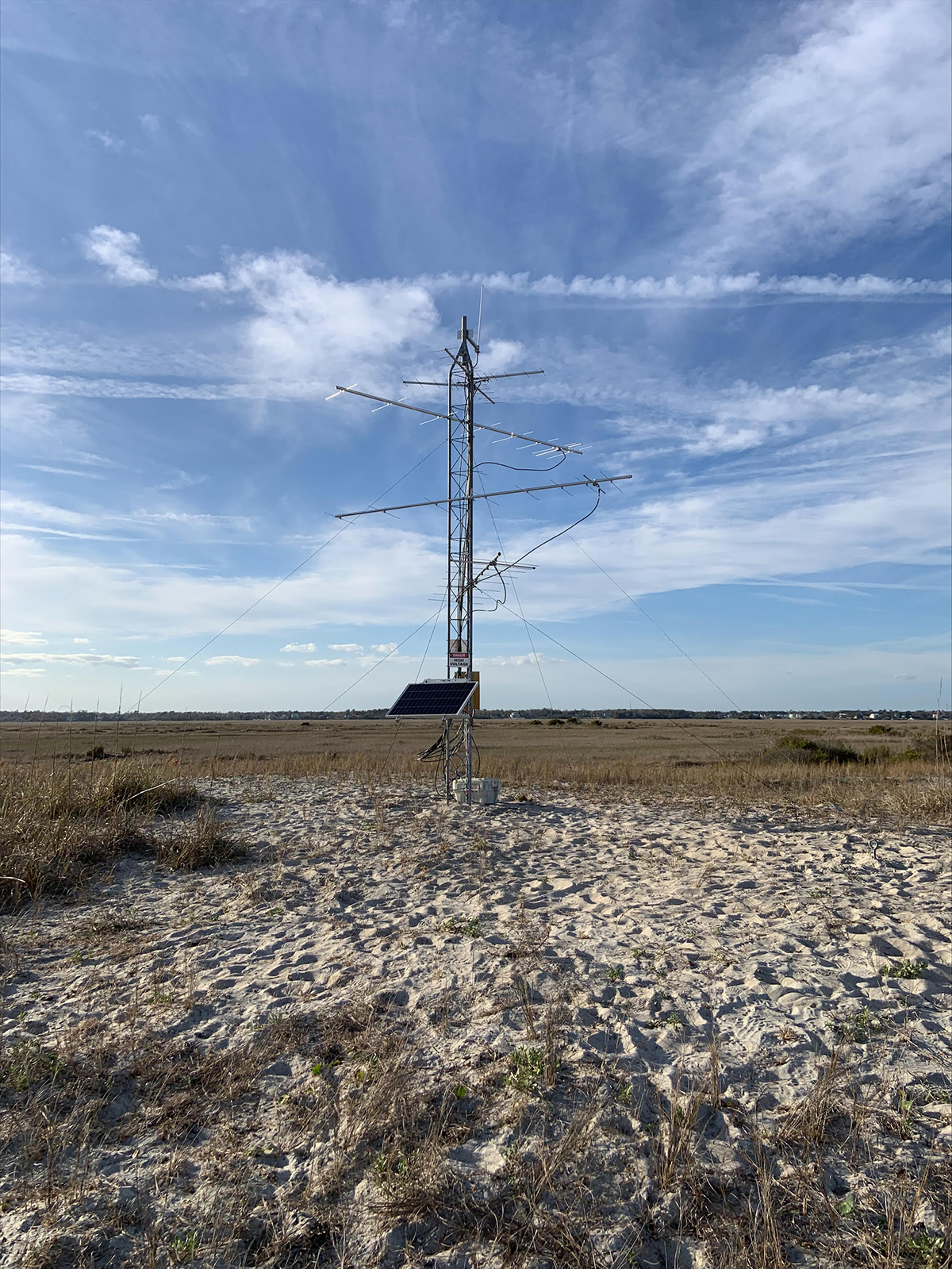
A network of towers that track small migratory animals is providing researchers with information that may help in conserving populations of insect, bat and bird species that are declining at alarming rates.
At present, only a small number of automated radio tracking towers tied into the Motus Wildlife Tracking System exist in North Carolina.
Supporter Spotlight
But researchers and conservationists are hoping that will change under a multistate and nonprofit collaborative effort to snag a $1 million federal grant to put more Motus towers on the ground in the Southeast and maintain hundreds of towers in the Northeast.
North Carolina, along with Pennsylvania, Vermont and Alabama, have led the charge in applying for a Competitive State Wildlife Grant, one that would bulk up the presence of a tracking system that is giving researchers insight on the finer details of migration patterns of small animals.
Motus towers track receivers designed to tag the smallest of migratory animals like dragonflies, microbats and species of little birds like the warbler and sparrow.
Tracking the movements of these animals helps researchers to understand migration timing — where and for how long animals stop to rest, feed and breed — and the areas that are important for different species, said Marae West, a doctoral candidate at the University of North Carolina Wilmington and a Cape Fear Audubon Society board member.
“All of that is super important for conserving them,” she said. “If we don’t know where they are or where they’re going, it’s really hard to conserve a species. So, I think a lot of this is really helpful in understanding how birds are migrating, why they’re moving, how they are moving and then how we can best conserve areas that they use.”
Supporter Spotlight
For example, West, who is studying the winter population biology of saltmarsh, seaside and Nelson’s sparrows, was able to see that one of the birds tagged for her study stopped over in Delaware for 15 days.
Earlier this year, West finished an effort initiated by her academic advisor, UNCW assistant professor Raymond Danner, who in 2018 wanted to install Motus towers in the region.
Thanks to her efforts, the newest Motus tower in North Carolina stands 20 feet high on Lea Island, an uninhabited barrier island that stretches between Topsail Island and Figure Eight Island.

Motus towers are not built from kits. They’re assembled from parts that can be purchased from any number of vendors. They can be built as freestanding towers, as is the case on Lea Island, or attached to existing towers, such as the one funded by a private donor on Bald Head Island.
The costs to build them range anywhere from $3,000 to $7,000.
When a tower picks up a signal from a tagged animal – as far away as 9 miles – the information about that individual animal is sent to the worldwide Motus network and uploaded to Motus.org.
Motus tags initially read at a frequency of 166 megahertz, but with ever-evolving technological advances, updated towers can read tags with a frequency of 434 megahertz.
Kendrick Weeks, North Carolina Wildlife Resources Commission’s western wildlife diversity program supervisor, explained that the Motus system gives researchers a picture of the full life cycle of a species, which is a missing piece of information on migratory land birds that breed in north America and then winter in the Caribbean, South America and Central America.
“Because they can experience threats anywhere along that life cycle, on the spring grounds, during migration, on the wintering grounds and, of course, back in fall migration,” Weeks said. “Because of that large range of these birds, it takes something like this, a collaborative effort, to do monitoring.”
He points to the results of a comprehensive 2019 survey conducted by U.S. and Canadian researchers who found that North America has lost 3 billion birds since the 1970s.
“A lot of those are these neotropical migrants,” such as shorebirds and grassland birds, Weeks said. “Interestingly enough, in that analysis waterfowl were not found to have been reduced. It really points to that effort, that conservation that’s been done over the past 50 years for waterfowl. All that work to conserve their habitat and regulate hunting really helped waterfowl populations. We don’t necessarily have that model for a lot of other birds.”
In order to do that, researchers and conservationists have embarked on a wider collaborative effort to broaden the information collected through Motus.
There is currently one Motus tower in western North Carolina. Two more are in the works. There are none in the Piedmont, a popular region for thrushes.
The grant would be split 50-50 between the Northeastern states and Southeastern states. Grant recipients are expected to be announced later this year.
The grant would help fund a “fence” of towers about 18.5 miles apart along the southern mountains of North Carolina, Weeks said. That would be about a half-dozen towers.
“That’s our primary focus at this point, but we would like to expand it more and more throughout the mountain region as well as the state,” he said.
Neotropical migratory land bird diversity is much higher in the state’s mountain region, where there’s a large assortment of warblers, including golden-winged warbler, cerulean warbler, Canada warbler and prairie warbler.
Weeks also points out that the monitoring potential goes beyond birds, from bats to butterflies to dragonflies.
“We’re really working with partners to try to get this network set up,” Weeks said. “We can’t do it alone. As a state agency, we are involved a little bit in research, but a lot of that is done with academic institutions. There’s a lot of bird conservation organizations that can be helpful.”
Adam Smith, a quantitative ecologist with the U.S. Fish and Wildlife Service’s Wildlife Refuge System’s inventory and monitoring branch in the South Atlantic-Gulf region and Mississippi River basin, said collaborative efforts to expand Motus is one of his favorite aspects of the system.
“But it’s also one of the more challenging ones,” he said. “Conservation dollars and staffs are small or shrinking and really this kind of collaborative effort is increasingly becoming one of our best chances at actually accomplishing meaningful conservation work. With something like Motus, individuals can still do their projects of interest, but at the same time can benefit a whole host of other projects that are completely unrelated outside of just using the same technology.”
Smith installed the first tower in North Carolina in 2015 on Cedar Island. He placed a few more in coastal South Carolina.
The initial focus then was to build up a coastal network of towers to track saltmarsh sparrow.
There are about a dozen Motus stations, most all of which read at the 166-megahertz frequency, on refuges in Florida. Smith said during an April 15 telephone interview with Coastal Review that he would soon be traveling to Florida to upgrade those towers to be able to also read 434 megahertz.
He updated the five stations on refuges in North Carolina to that dual-mode capability last year.
“The advance of Motus or the use of Motus that really is driving us is that lots of migratory birds are declining for various reasons, some of which we partially understand and some of which we don’t,” Smith said.
“But they have these really complex annual life cycles that are only part of the time on the breeding grounds and part of the time somewhere in Central or South America or the southeast U.S. and then they spend a very large chunk of their year moving from those places and back again. There’s pretty good evidence to suggest that active migration is the part of the life cycle where it’s the hardest to survive,” Smith continued. “I think Motus has that potential to really inform kind of that first step to try to identify these broad-scale patterns and look for things that stick out as areas that are consistently being used and worthy of a deeper exploration as to how birds are using that site and what particular areas in that general region are worth acquiring or protecting or doing something for conservation work on.”









